It took a global pandemic to get this industry running in fifth gear but once it did, it became a formidable force. 2020 was the year when eCommerce took center stage amidst lockdowns and quarantines, and the uptick in online traffic led to a 31.8% increase in growth since the previous year. Existing eCommerce trends took a turn and the industry stopped being a luxury once most businesses shifted online.
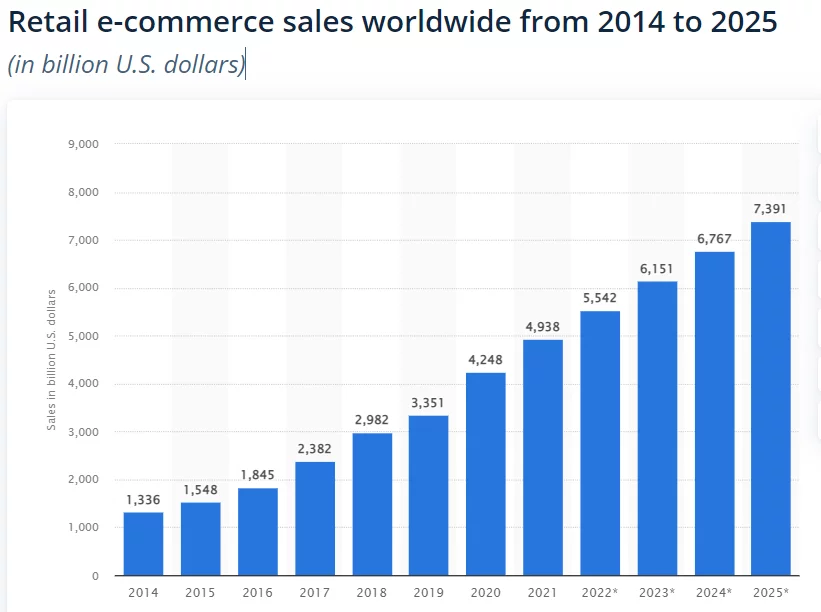
It isn’t expected to slow down anytime soon either. Current predictions estimate that online shopping revenues will reach over $5 trillion in 2022. And this growth isn’t going to be without its fair share of changes.
We’ve already seen just how expansive this industry truly is – and with the likes of Amazon, eBay, Flipkart, and AliExpress penetrating untapped global borders, it is expected to not just grow substantially but change to meet diverse cultural and political challenges.
So, what should the eCommerce market expect for the remainder of 2022? In this article, we explore this question.
By the end of this post, you will have a better understanding of the top 12 future eCommerce trends for 2022 and what you should expect in the coming months.
1. The Implementation Of Artificial Intelligence
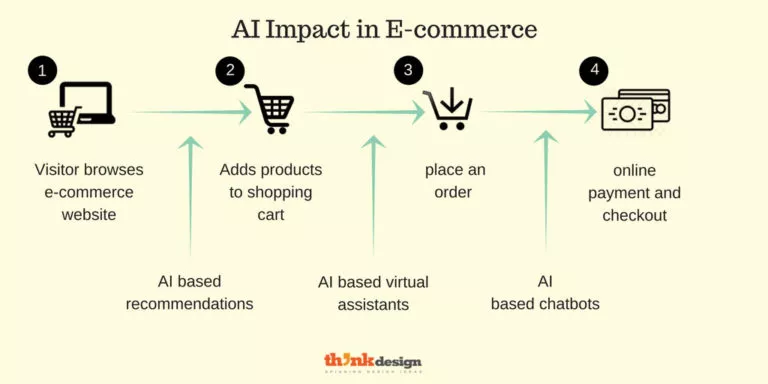
If you’ve ever browsed through any modern eCommerce stores (which you have), you know how clicking on a listing or searching for a product immediately floods your store’s homepage with similar listings.
This can be attributed to AI, its implementation doesn’t just stop at product recommendations either. We can expect to see artificial intelligence used across the board to personalize entire customer experiences.
Amazon excels at AI integration and gets nearly 35% of its revenue from upselling or cross-selling on its eCommerce platforms. But AI can power more than that. Voice searches and chatbots are great examples of AI implementation that could become commonplace later in 2022.
Chatbots can effectively:
- Answer consumer questions
- Recommend sizes
- Automate product descriptions
- Improve search results
- Mitigate chargebacks and fraud
Since it’s machine learning, the technology can learn consumer shopping patterns and raise red flags or block transactions that could be fraudulent. Bots would prove to be a massive money-saver for online retailers.
All in all, AI can increase the following aspects of eCommerce:
- Revenue
- Customer satisfaction
- Cost reduction
By 2025, almost 95% of customer interactions online will be managed by AI technology. Expect this to continue and grow beyond 2025 too.
2. Prioritizing Customer Service
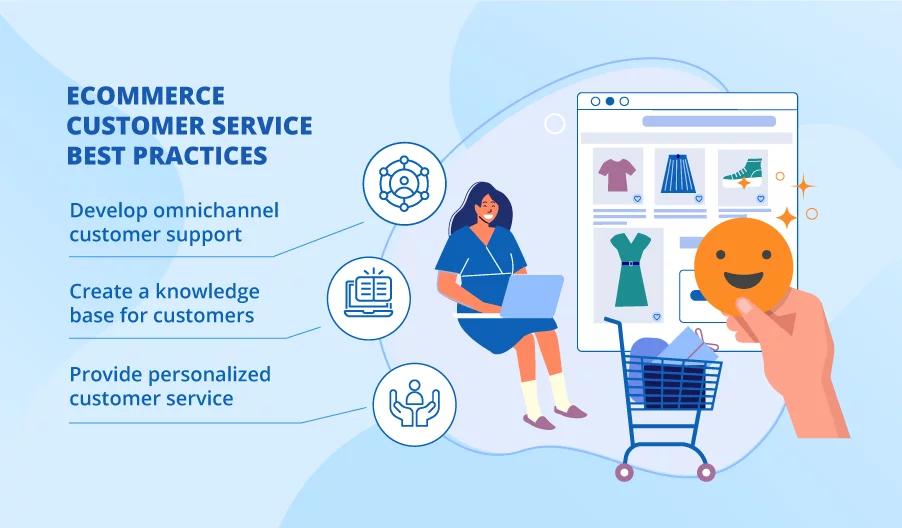
Customer support has always remained the primary focus for most brick-and-mortar and online businesses. Every eCommerce business you come across will have some form of customer service implemented into their website. However, the most notable differentiators in customer acquisition and customer relationship remain capabilities and quality standards.
Many eCommerce sites don’t have brick-and-mortar stores that offer in-person assistance. That’s why knowing how to provide online support is vital. Most SEO experts don’t let their clients get past the final stages of marketing without adequate customer service provisions. And when considering eCommerce KPIs, customer service and sales go hand in hand – so its importance cannot be stressed enough.
A heavy emphasis on live chat and messaging is to be expected across eCommerce brands as it is a more viable and affordable option compared to a dedicated eCommerce call center. And unlike phone support, multiple live chats are handled at any given time. Adding the previously-mentioned point only strengthens the capabilities of future customer service.
We mentioned chatbots earlier, and as their name would suggest, they can be deployed in place of human live chat operators. In their present state, chatbots can answer simple queries and online shoppers are directed to a human operator if the question is beyond the scope of AI’s depth. This fact could change as AI chatbots are trained to handle more complex questions and scenarios at the front end.
If your eCommerce brand caters to an international audience, provide multilingual chatbots to help you connect with global audiences better. It removes the language barrier to your brand’s customer support efforts.
3. Flexible Payment Options
Losing out on eCommerce sales because your website doesn’t support their preferred payment methods is a bigger problem than meeting your caloric macros. Digital and mobile wallets are quickly becoming the norm for most shoppers and have already become the top payment method worldwide, second only to credit cards. Expect more than half of eCommerce traffic to be through digital wallets very soon.
Cryptocurrency is another popular online payment option and while it still ranks below in usability, more websites are supporting Bitcoin and Ethereum at checkout. We suggest implementing these transaction methods in your online store:
- Digital wallets
- Mobile payments
- Credit cards
- Debit cards
- Bank transfers
- Cryptocurrency
But the popularity of payment methods can be geographically limited. Thailand for instance, widely prefers bank transfers, while the US prefers Paypal. Research the payment methods used in the country or region you’re targeting and provide solutions accordingly.
4. Multilingual Stores
Localization is vital to achieving worldwide success. Industry leaders like Amazon and eBay have expanded operations in multiple countries, and smaller eCommerce stores can benefit from a similar strategy.
Most shoppers prefer to shop for products with information in their language anyway, with almost half admitting to never buying from a store that sells in other languages.
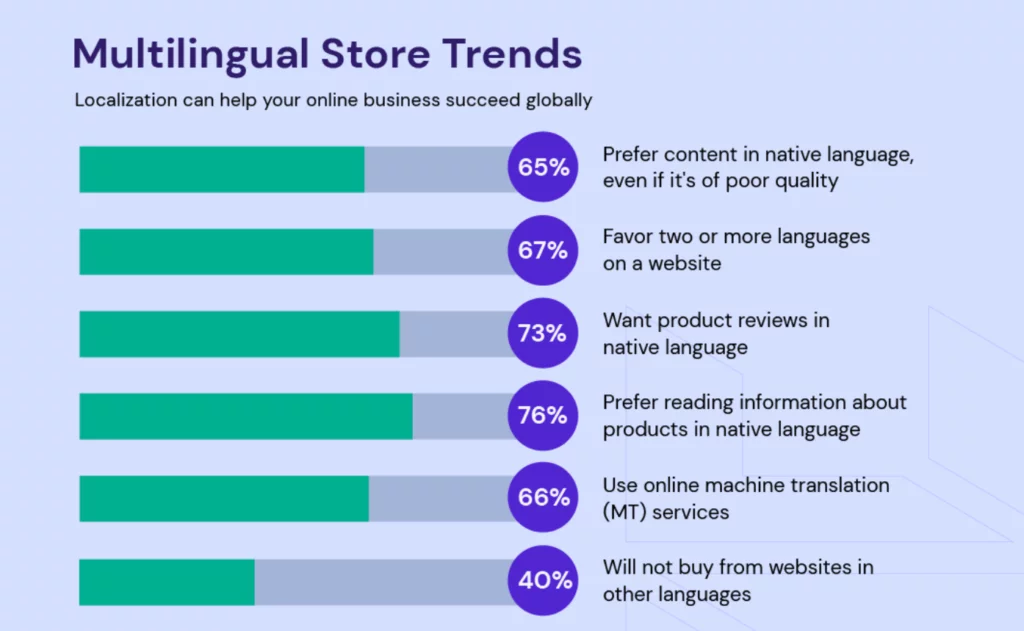
By ensuring that your online store is accessible in more languages, your digital sales revenue is bound to go up. Most website design firms specialize in this and can help you set up a customer service system in your website’s back-end in the alternative languages too.
If you built your eCommerce store with a WordPress SEO consultant, they will recommend plugins to install that can automatically add multiple languages for you.
5. Omnichannel Selling
Omnichannel selling is the technique of integrating multiple platforms and sales channels to provide a seamless experience. It includes websites, social media platforms, all social commerce, and the offline brick-and-mortar store experience. Mobile eCommerce is set to take over and will account for 42.9% of the market share by 2024.
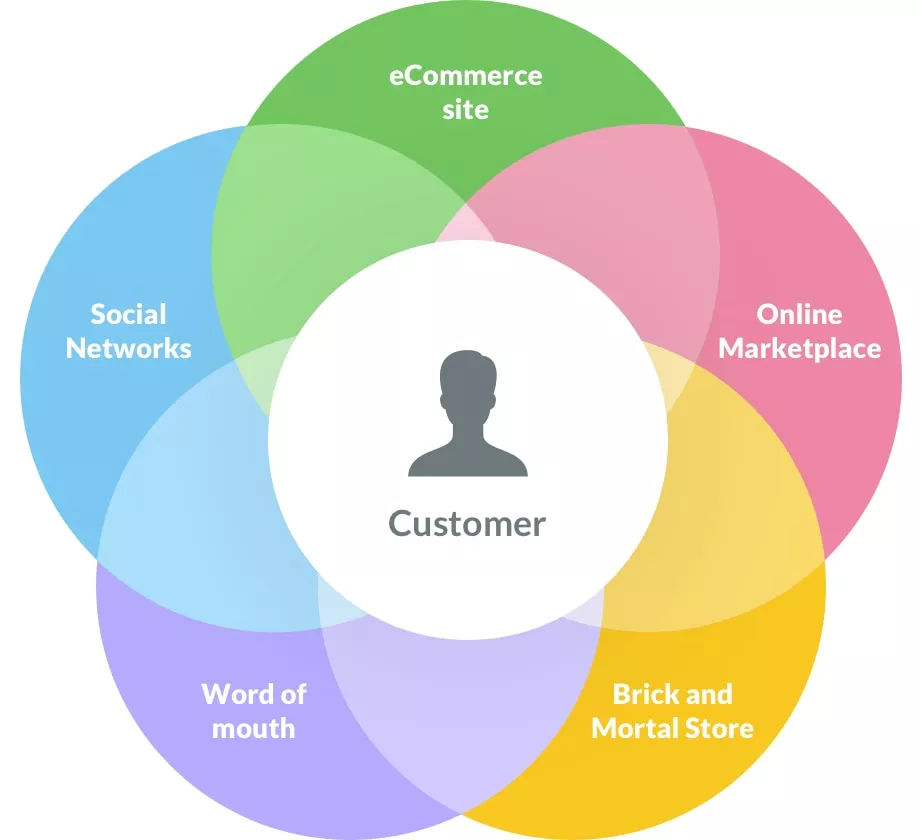
It clarifies mobile shopping’s stance as one of the most important facets of omnichannel eCommerce. Creating a mobile-friendly store using progressive web apps (PWAs) is the route most companies take.
A PWA acts like a native app and is the perfect solution for eCommerce owners looking to build a native app and a website as the PWA can function both on mobile. Even if you have an existing online store, you should still consider getting an enterprise hosting service from a reliable service provider, and developing an omnichannel outlet. And marketplaces (in place of single-brand eCommerce stores) are also a great option as they provide convenience and a large selection of products to choose from.
You can then relegate your physical store to your online business’s logistics hub or office headquarters. eCommerce is still stuck with returning orders, so a logistics hub can help process returned items. Just remember, this balancing act between online and offline channels requires consistent customer experience.
6. Subscription Models
People have become increasingly used to shopping online and the convenience it brings, and most companies have realized that subscriptions are the most practical method of fulfilling their needs in the future.
Similar to streaming services like Netflix and Hulu, products can come as subscriptions too. eCommerce stores are experimenting with resume parsing services, meal kits, Apple care, car brake repair services, and monthly clothing deliveries.
Subscription models also provide the opportunity for businesses to generate additional revenue. They can even help with inventory forecasting and boost customer retention rates.
There are three major types of subscriptions:
- Replenishment – refers to necessities that are required regularly, such as fresh produce, pet foods, or diapers.
- Curation – personalized selection of products, such as coffee or self-care products.
- Access – these provide member-only benefits, such as new product samples or lower prices.
At present, the churn rate is the biggest challenge facing this niche. To reduce it, sites like Amazon offer free delivery and access to other new products or services for free or heavily discounted prices.
7. Conversion Rate Optimization
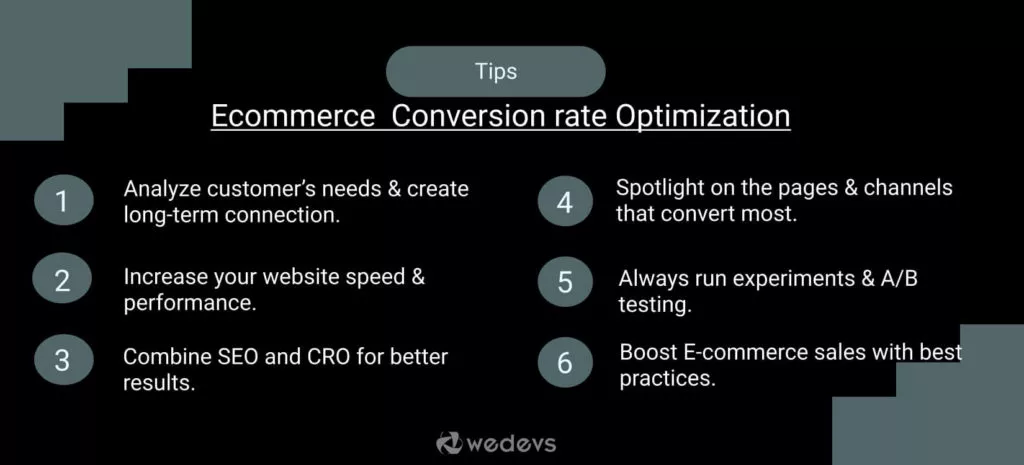
Your eCommerce website isn’t going to do you any good if it has all the traffic in the world but fails to convert it into sales. Traffic to sale conversion is one of the most important tasks to focus on, and applying conversion rate optimization (CRO) can help. CRO helps increase your retail sales by pushing site visitors to sign up for your newsletter or buy your products.
Here are several methods to optimize your site’s conversion rate.
7.1 Simplify The Homepage
It typically takes a few seconds to make an impression on people and in eCommerce, it is even lower. Try to make a great first impression with the visitors and don’t inundate them with banners, products, and images. Avoid excessive information, and focus on important brand messages by building a straightforward copy and a clear CTA.
7.2 Use Visual Cues To Build Trust
Payment information is private and the ever-increasing financial scams have made people less likely to share it on eCommerce websites. Secure your website’s payment gateway and use trust badges like a padlock icon to give customers the confidence to make a purchase. A Shopify SEO company can help you get this set up in no time.
7.3 Display Product Reviews And Testimonials
People gravitate towards reviews and testimonials before making a purchase decision. Because they trust consumers more than they trust brands speaking about how good they are. Display them on the product pages to showcase their credibility.
7.4 Optimize Your Site For Mobile Users
As mentioned before, PWAs and mobile commerce are on the rise, so ensure that your eCommerce site is mobile-friendly.
A/B testing can help indicate which version of your website performs better. Create two different versions of a webpage and analyze which generates more conversions. Another tip is to keep an eye on product prices and use some top-tier Amazon repricing services to relist for you. This repricing tool aims to get the most amount of people buying a product with a discounted on updated price.
8. Sustainable Online Shopping
The environmental impact of the eCommerce industry is becoming a fiercely discussed topic in the world, and after the COVID-19 pandemic, the majority of consumers value sustainability issues more than before.
One of the biggest concerns today is how orders are packaged and delivered. A major chunk of global CO2 emissions is a direct result of eCommerce shipping methods in the transportation sector worldwide.
Businesses have to adjust to this large-scale shift in consumer behavior and eCommerce preferences. According to Statista, 52% of buyers in the US and UK demand brands to create products with less packaging. Moreover, eco-friendly packaging is also becoming the norm.
The best way to hop on board this eCommerce trend is to use more eco-friendly alternatives like paper and cardboard as these can be recycled. If you still require plastic, use biodegradable options or plant-based bioplastics instead.
9. Fast And Free Delivery Options
Most customers require their deliveries to be on time, and preferably, before time. The quicker the delivery times are, the happier the customers are; that’s the general rule. Due to this, more and more eCommerce stores are offering faster delivery times to help fulfill customer expectations.
Amazon, for instance, has warehouses all over the world. It helps the company achieve a faster supply chain by accessing products quicker and ensuring timely deliveries. But speed aside, eCommerce businesses should look into affordable or free delivery too and make it the primary source across the board.
Shipping prices matter, and along with shipping speed, it will continue to influence the future of eCommerce in the coming years.
10. Live Shopping
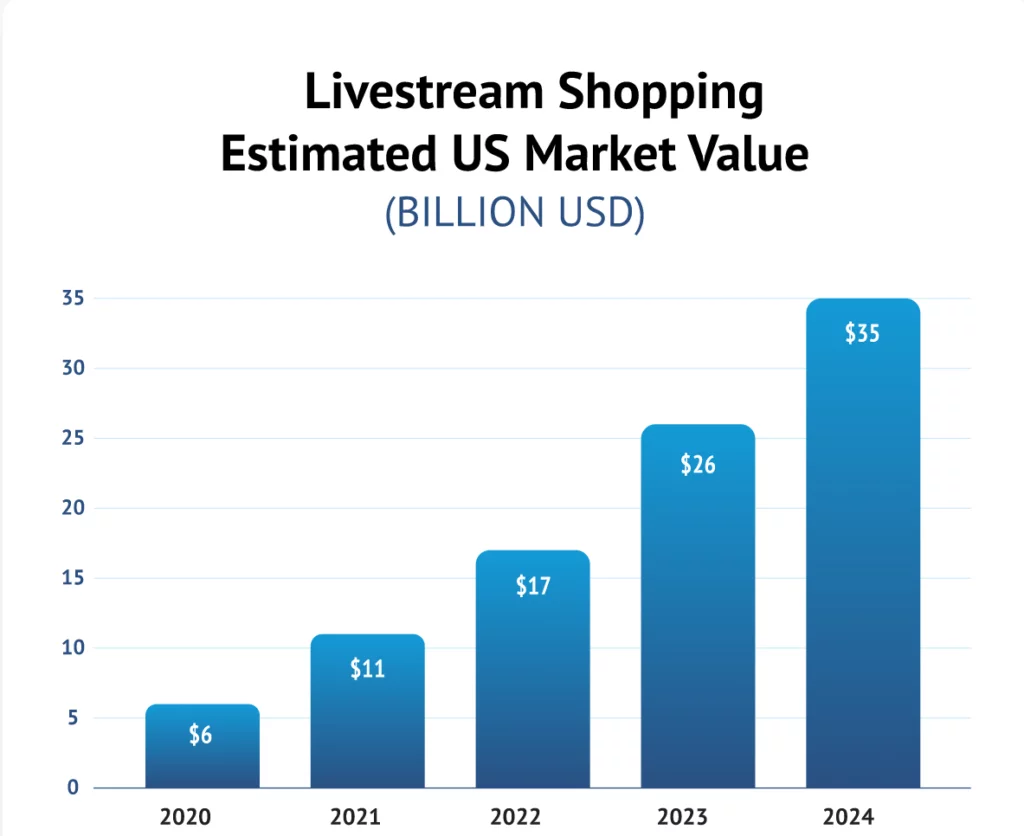
Alibaba’s Taobao Live generated $7.5 billion in transaction value in the first 30 minutes of its Single’s Day 2020 live shopping event. Since then, Amazon and Walmart have followed suit with their alternatives in Amazon Live and TikTok respectively. Live shopping is going to become mainstream.
Live shopping is an interactive video streaming solution where eCommerce brands discuss their products and answer audience questions live. Customers can chat and buy products through the instant purchasing options. While this type of marketing is usually brand-specific, eCommerce companies can also use celebrities and influencers as live hosts to garner a larger customer audience.
11. Marketing Automation
eCommerce brands can use the power of marketing automation to automate routine tasks within the marketing process. These tasks can include ads, outreach, and follow-up emails and the technology doesn’t rely on generic messages either.
Marketing automation collects and analyzes customer data to create personalized experiences for every step of the customer journey. Businesses can look to drastically improve customer engagement and increase their conversion rates.
It can also help leads mature into sales and helps streamline the workflow of your marketing and sales teams and help them save time spent doing menial tasks. You’ve probably received an empty cart email from Amazon, turns out, it is one of the most impactful follow-up emails. It is sent to customers when they put items in their cart but don’t finish the transaction.
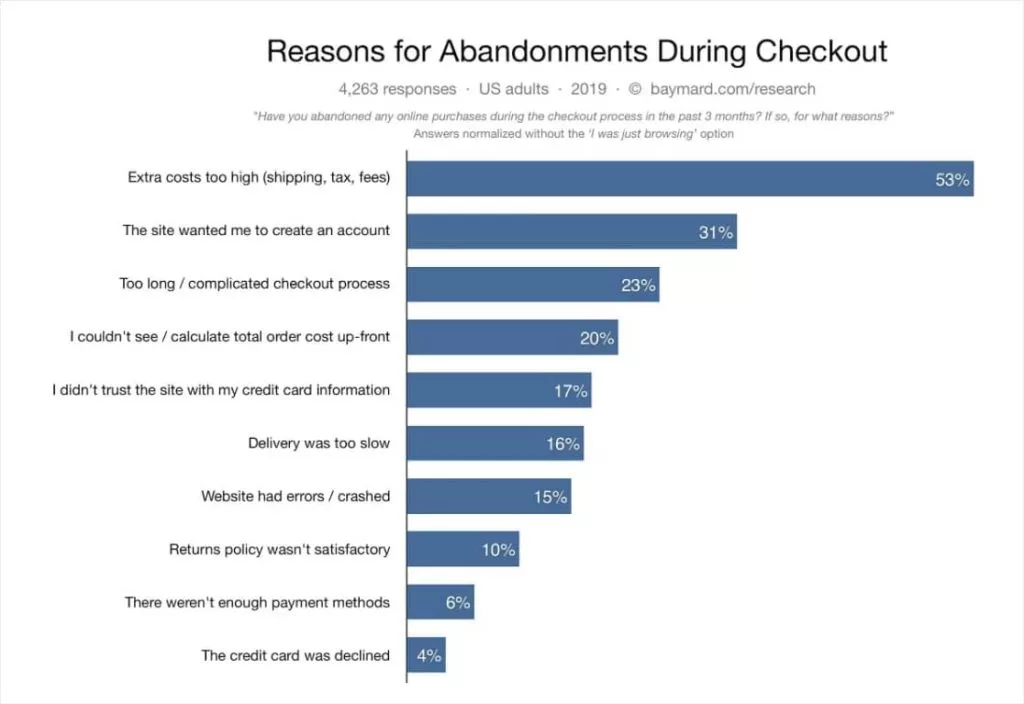
Incomplete carts on eCommerce sites can be attributed to hundreds of reasons. Website analytics with Magento SEO services can help iron out the exact reasons.
12. Online Wholesale Industry
In 2021, B2B businesses had a stronghold and attracted the attention of buyers, sellers, and investors from all over the world. This trend has found its way into eCommerce as well with wholesalers like UNFI launching marketplaces on their sites.
Abound, in the US, and Ankorstore in France, both raised $23 million and €82 million last year. Both companies have a similar business philosophy and help connect independent and small retailers with specialty wholesalers. The offline wholesale industry of yesteryear is no longer, and eCommerce is slowly facilitating its transition online.
It is despite the industry’s insistence on staying offline while the rest of the world migrated onto the internet. Now, multiple platforms enable buyers to get in touch with their desired sellers and receive products as soon as possible. For those who are looking for a high yield on their investments, this is the domain to watch out for as it explodes in popularity and comes into the mainstream.
Conclusion
eCommerce is already a formidable force in the world of business and there’s no stopping its growth or innovation now. Trends like virtual reality and augmented reality are being worked on too and as the technology matures, we can expect them to be a part of our online shopping experience too.
While it is tough to get an online brand going today (most investors sell their eCommerce sites before it tanks), these previously-mentioned trends can help guide newcomers to the latest and upcoming changes to expect.
And if you’re looking for dependable, managed WordPress hosting, you’ve come to the right place. We at Nestify help new and upcoming eCommerce brands to get going by providing the best WordPress hosting options that are powered by Amazon Web Services (AWS). We support page speed optimization so your eCommerce site remains quick and nippy, and allow unlimited site migrations to make A/B testing easier. If you have any queries, please visit our website or get in touch with us at [email protected] so we can host your next project.



